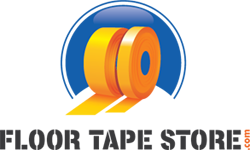5 Things You Learned in Kindergarten that Taught You 5S March 12 2015
 You may think that doing an overhaul on your current system of organization is a time consuming, daunting task. While the initial implementation of the 5S organization system can take a fair amount of planning and execution, the overall time and effort spent maintaining the system is minimal. In fact, your business will ultimately save money and time, as your workspace and warehouse floor will be much cleaner and more efficient as a result of the new system.
You may think that doing an overhaul on your current system of organization is a time consuming, daunting task. While the initial implementation of the 5S organization system can take a fair amount of planning and execution, the overall time and effort spent maintaining the system is minimal. In fact, your business will ultimately save money and time, as your workspace and warehouse floor will be much cleaner and more efficient as a result of the new system.
What is even better is that the principles behind 5S are uncomplicated and straightforward, making them easy for everyone involved in the business to follow the procedures. These simple ideas have been engrained in us from a young age! Read on for some familiar concepts you probably learned in Kindergarten that helped you get on this path to 5S, organization, and efficiency.
1. “Clean up, clean up! Everybody clean up!” After play time is over, we were taught to clean up all of our toys that we weren't using anymore. Putting away toys and other items that we were no longer playing with allowed us to have more space to learn and play, and it made cleaning up after the next play session much faster. This is the cornerstone behind the first pillar of 5S, Sort. This pillar is all about clearing away unnecessary items and tagging them for disposal, recycling, or storage.
2. Everything in its place. In Kindergarten, every storage bin, pencil cup, and shelf is labeled for what should be stored there. This ensures that colored pencils remain with colored pencils, craft paper remains with craft paper, and building blocks remain with building blocks. In a space with so many people and so many shared items among them, it is easy for the area succumb to the chaos and become a jumbled mess. By following the second pillar of 5S, Set in Order, the process for finding what you need in your workspace quickly is much faster.
3. Daily chore checklists. With all of the crayons put away and scrap paper recycled appropriately, there is still a mess at the end of the day – surfaces sticky with glue, paint splatters on the walls, craft glitter scattered on the carpet. The disorder still needs to be addressed before the day can end, so tomorrow doesn't begin cleaning up after yesterday. Creating a daily “Shine” – the third pillar of the 5S system – checklist of cleaning chores keeps everyone accountable for maintaining the workspace and saves cleaning time in the long run.
4. Finding your clothespin name tag on the job assignment wheel. By giving everyone a specific job for which they are responsible for maintaining, little learners were also gaining pride in their classroom and gave them a sense of ownership of their workspace. Assigning tasks to individuals, taking steps to integrate new tasks in their daily work, and checking on others to make sure they are also following the new steps for maximum efficiency is what encompasses the fourth pillar of 5S, Standardize.
5. Listen to your teacher and follow directions. The hardest part of putting your scrap paper in the recycling bin while you're focused on your work of art was always just remembering to do it. When you're implementing a new system of organization, it can be easy to fall back into old habits. The fifth pillar of 5S, Sustain, keeps the circle of the 5S system flowing. In Kindergarten, we got rewards, like candy and extra play time, for doing a good job on our work and doing our chores. Today, the reward is the Employee of the Week, the raise after a good performance review.
Do you use any of these practices in your workplace? Let us know what works for you!
Other posts you may find interesting:
5 Things About 5S Pillars You May Not Know
5 Reasons Your Warehouse Needs the Collision Sentry Warning System
How Lean Thinking Will Transform Your Workplace into a Safer, More Satisfying Environment




